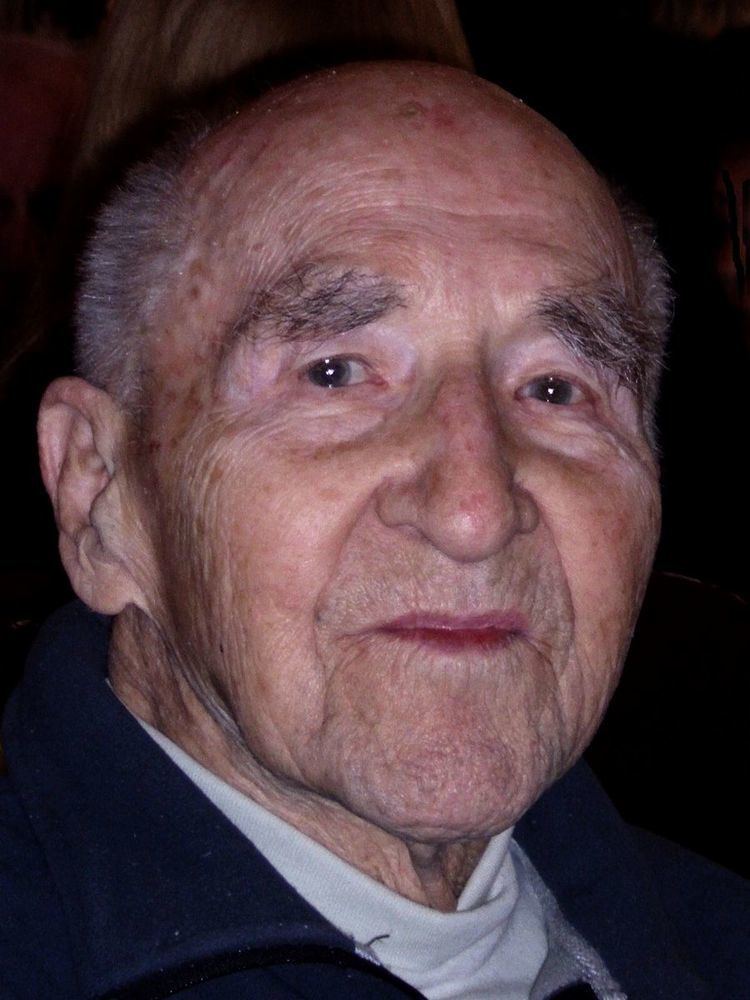Nationality Slovenian Occupation architect, publicist | Other name Vid (partisan nickname) | |
 | ||
Other names Vid (partisan nickname) Died 7 May 2016, Ljubljana, Slovenia | ||
Ignac Gregorač (Partisan name Vid), Slovenian architect, publicist, holder of the Commemorative Medal of the Partisans of 1941, *June 24, 1916, Rijeka, †May 7, 2016, Ljubljana.
Contents
Life and Work
His family moved to Tacen after d'Annunzio's conquest of Rijeka in 1920 and later to Ljubljana in 1923. He finished classical gymnasium in 1935 and graduated from the Technical Faculty of the University of Ljubljana in 1940, under the mentorship of Prof. Dr. Ivan Vurnik. During the studies he was active in progressive student associations. In 1941, he joined the Liberation Front of the Slovene Nation (OF), where he and his brother France (Cene) made and used a printing and documentation hideout in their own house. On June 15, 1942 he joined the Partisans, where he worked as a technical assistant, organizer and political activist in the Central Technical Section (CT)
He worked in the Partisan printing-press Triglav on the Gotenica Snežnik mountain from 1943 to 1944. After enabling the printing of Partisan bonds and Italian liras, he was transferred to the CT leadership in Stara Žaga as a group leader's assistant for the Graphic Department, and later as the leader of the Central Distribution Department. In October 1944, he was transferred to the main headquarters of the People's Liberation Army and Partisan Detachments of Yugoslavia (NOV-POJ), to OZNA, where he awaited the end of the WW2 on May 9, 1945 as an acting director of the fourth section. During the war, he was a candidate for the Communist Party of Slovenia (KPS) since October 1941 and a member since October 1943. He reached the rank of major, and after the war he was transferred to the reserve forces.
Between August 25 and November 26, 1945, he was appointed director of the National Film Company DFJ. After two months, on January 31, 1946 he returned to his profession as a designer in the Federal Architectural Bureau (ZPZ), where he also assisted in the restoration of the king Alexander's palace in Belgrade (Dedinje) and the agricultural laboratory in Zemun.
In February 1947, he joined the Yugoslavian technical and economic aid mission to Albania, where he met his future wife, a high-school teacher Ljubica Tafra from Šibenik, who also took part in the mission in the Ministry of Culture. He assisted the Albanian Infrastructure Ministry and also designed the wool processing factory in Tirana. In the fall of 1948, after the Cominform split, the People's Republic of Albania stopped cooperating with Yugoslavia, so he returned to work in Belgrade at the Federal Ministry of Infrastructure.
Later he was transferred to the Internal Affairs Department of The Yugoslav State Security Administration (UDBA). In the years from 1952 to 1953, he studied in Paris where he specialized in hospital infrastructure planning. When he returned, he planned the Civil Protection Training Centre in Belgrade (Batajnica). Then he was transferred to the Foreign Affairs Department and supervised the construction of the then Yugoslav embassy in Washington on California Street between 1960 and 1961. Since December 28, 2001 the building has served as the Slovenian Embassy. He also conceptualized the construction of the Yugoslav Embassy in Moscow.
In 1963, he returned to Ljubljana, the capital of the then Yugoslav republic of Slovenia, which he had missed while living elsewhere. Here he worked as a senior advisor in the then Ljubljanska banka Gospodarska banka Ljubljana, currently SKB, until his retirement on September 1, 1972.
When he was back in Ljubljana, his fruitful publishing activity started. He had a lot of material from his wartime experiences, which he also portrayed in an article entitled "Življenje v tiskarski postojanki 11A Triglavski tiskarni" (The Life in the Printing Outpost 11A Triglav Printing Outpost published in the Borec (Fighter) magazine.
Together with a painter Alenka Gerlovič (1919–2010) he wrote Likovna vzgoja otrok (=Likovni pouk otrok) (1968)(Visual Arts Education of Children). However, his most acclaimed book was Štampiljke Osvobodilne fronte slovenskega naroda, 1941 – 1945: podoba in dokaz rojstva slovenske družbe, ljudske oblasti in države v obdobju okupacije in narodnoosvobodilnega boja (1997)(The Official Stamps of the Liberation Front of the Slovene Nation 1941–1945: Vision and Proof of the Birth of the Slovenian Society, People's Government and State during Occupation and National Liberation War), about which Dr. Janko Kostnapfel (2009) wrote: “Regarding its contents and production value, this work is at the level of a doctoral dissertation in history, social studies and technical sciences, and yet it is probably little known to other historians". He also made book design for both publications. In addition, he was active in responding to social polemics of the time and helped in the creation of the Encyclopedia of Slovenia.
Ignac Gregorač – Vid was not just an architect, excellent draftsman and designer, but also a writer of articles and two books, designer of museum exhibitions. He was a fighter for unpolluted environment, active in social and political affairs and one of the founders of the progressive movement Slovenska pot (Slovenian Way). Exact, analytical and logical in his work, he was also in favour of People`s Front and Labour movements. He remained a proponent of humane, democratic and just social society even after the political changes of 1991.
The Ljubljana City Assembly awarded the Zlata plaketa illegalca (Golden Plaque of the Member of Underground Movement) to the Gregorač family, which he accepted in 1984. He was buried in the Ljubljana Cemetery on Friday, May 13, 2016, with military honours.
Decorations, Medals, Plaques
Orders by rank
